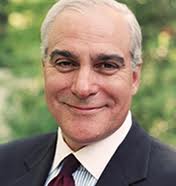 Building and maintaining a culture that supports diversityand inclusion is the role of today's leader. This includesrecruiting, valuing and respecting people from differentbackgrounds, experiences and perspectives.
Building and maintaining a culture that supports diversityand inclusion is the role of today's leader. This includesrecruiting, valuing and respecting people from differentbackgrounds, experiences and perspectives.
Diversity and inclusion was the focus of our most recent CreditUnion Leadership Forum Edu-Leader learning event for senior leadersto increase organizational effectiveness. Insights andperspectives were provided by Angela Vallot and Mitchell Karp ofVallotKarp Consulting as well as Kathleen Bohan, senior vicepresident of research at Univision Radio.
|Rapidly changing demographics affect not only the credit unionindustry, but require the attention of leaders across industries tounderstand the dynamics of diversity and engagement throughout anorganization's culture.
|Diversity involves elements that differentiate groups and peoplefrom one another. It includes the broad range in approachesand perspectives arising from differences in culture, personalattributes, membership in a social group and othercircumstances.
|Inclusion differs from diversity. Inclusion entails beingvalued, respected and supported by leaders, which creates anenvironment that recognizes and appreciates the differences amongpeople and the value these differing views bring. When adiverse workforce feels welcome and motivated, ideas are expressedmore freely, resulting in greater collaboration and innovation.
|Effective leaders make fewer assumptions about people based onrace, gender, sexuality and nationality. Karp used the“Iceberg Model” to illustrate that only about 10% of the datarelated to an individual's uniqueness is readily seen. The other90% includes things that are not clearly visible, includingethnicity, socio-economic status, religious beliefs, sexualorientation, work style and skill, professional values, politicalaffiliation and educational background.
|Inclinations often form the basis of judgments and decisions,including recruiting and promotion decisions. Awareness ofinclinations allows leaders to form better judgments when “tip ofthe iceberg” factors are replaced with valuable, fact driveninformation.
|In his book Blink, Malcolm Gladwell recounts a classicexample. 30 years ago, most professional orchestrasimplemented “blind” auditions with musicians playing behind ascreen, changing a long-standing tradition of conductors and judgesviewing the auditioning musicians. Although this changeoccurred in part to stop conductors from favoring former students,the unexpected result was a fivefold increase in the number ofwomen chosen for spots in prestigious orchestras.
|Inclusion affects the work environment, the members/customers,the community and the bottom line. Everyone wants to betreated respectfully. When employees feel valued, they becomeengaged and feel greater job satisfaction. Employeesatisfaction results in member/customer satisfaction and loyalty,which builds success.
|Furthermore, the ability to recruit and retain top talent islinked to how employees experience the organization. Aculture of inclusion leads to productivity, retention andloyalty. Furthermore, a diverse workforce brings wisdom andinsights about the organization's members/customers, who arethemselves increasingly diverse.
|Leaders face challenges to diversity and inclusion. Often themost important one is insider/outsider dynamics within theorganization.
|Insiders, who are usually in the majority, often have a sharedculture of norms, values and assumptions, as well as a sharedhistory. Outsiders are a numerical minority and often are women,people of different race, ethnic or sexual orientation. Outsiders can be self-conscious, live in fear of making amistake, be reluctant to offer suggestions or ideas and even have asense that they must work harder to prove themselves. Thesebehaviors diminish creativity, innovation and productivity.
|Leaders can become aware of their natural pre-dispositionsthrough self-examination. They can explore probing questionssuch as: Who are the people that I think are similar to me? Who is included and excluded? Who receives praise orcriticism? Whose contributions are taken for granted? When doI listen? When do I shut people out?
|With the help of insights gained through self-reflection,leaders can develop an action plan for themselves. They cancontemplate how diversity and inclusion both add value to anorganization to help it to better serve its changing demographicsof members/customers, enable it to attract new members/customersand develop more innovative products.
|They should be open to considering “what I am missing” inthinking about their colleagues and the work environment. They can pay attention to ways in which they include or exclude“others” and adjust accordingly. They can notice and expandattention to those that they might not know or might haveoverlooked – seeking out their input and gaining a new perspectiveon the business and member/client base.
|The effective leader understands the role each person plays inacknowledging and valuing diversity and promoting a culture ofinclusion. A culture that maximizes the effectiveness of eachindividual in the organization increases the success of theorganization as a whole and its capacity for growth.
|Stuart R. Levine is chairman/CEO of Stuart Levine &Associates. Contact (516)465-0800 or stuartlevine.com.
Complete your profile to continue reading and get FREE access to CUTimes.com, part of your ALM digital membership.
Your access to unlimited CUTimes.com content isn’t changing.
Once you are an ALM digital member, you’ll receive:
- Critical CUTimes.com information including comprehensive product and service provider listings via the Marketplace Directory, CU Careers, resources from industry leaders, webcasts, and breaking news, analysis and more with our informative Newsletters.
- Exclusive discounts on ALM and CU Times events.
- Access to other award-winning ALM websites including Law.com and GlobeSt.com.
Already have an account? Sign In
© 2024 ALM Global, LLC, All Rights Reserved. Request academic re-use from www.copyright.com. All other uses, submit a request to [email protected]. For more information visit Asset & Logo Licensing.









